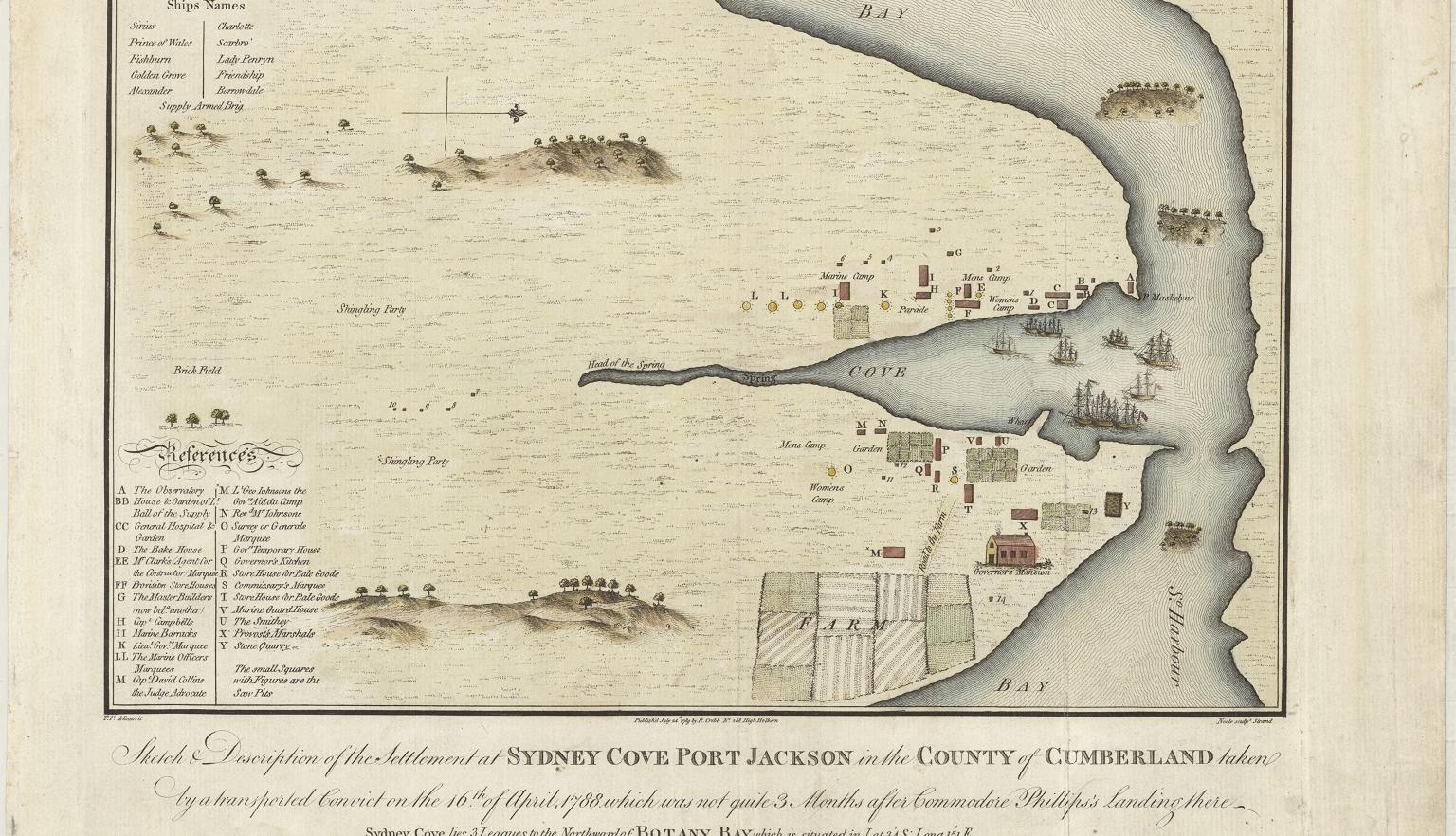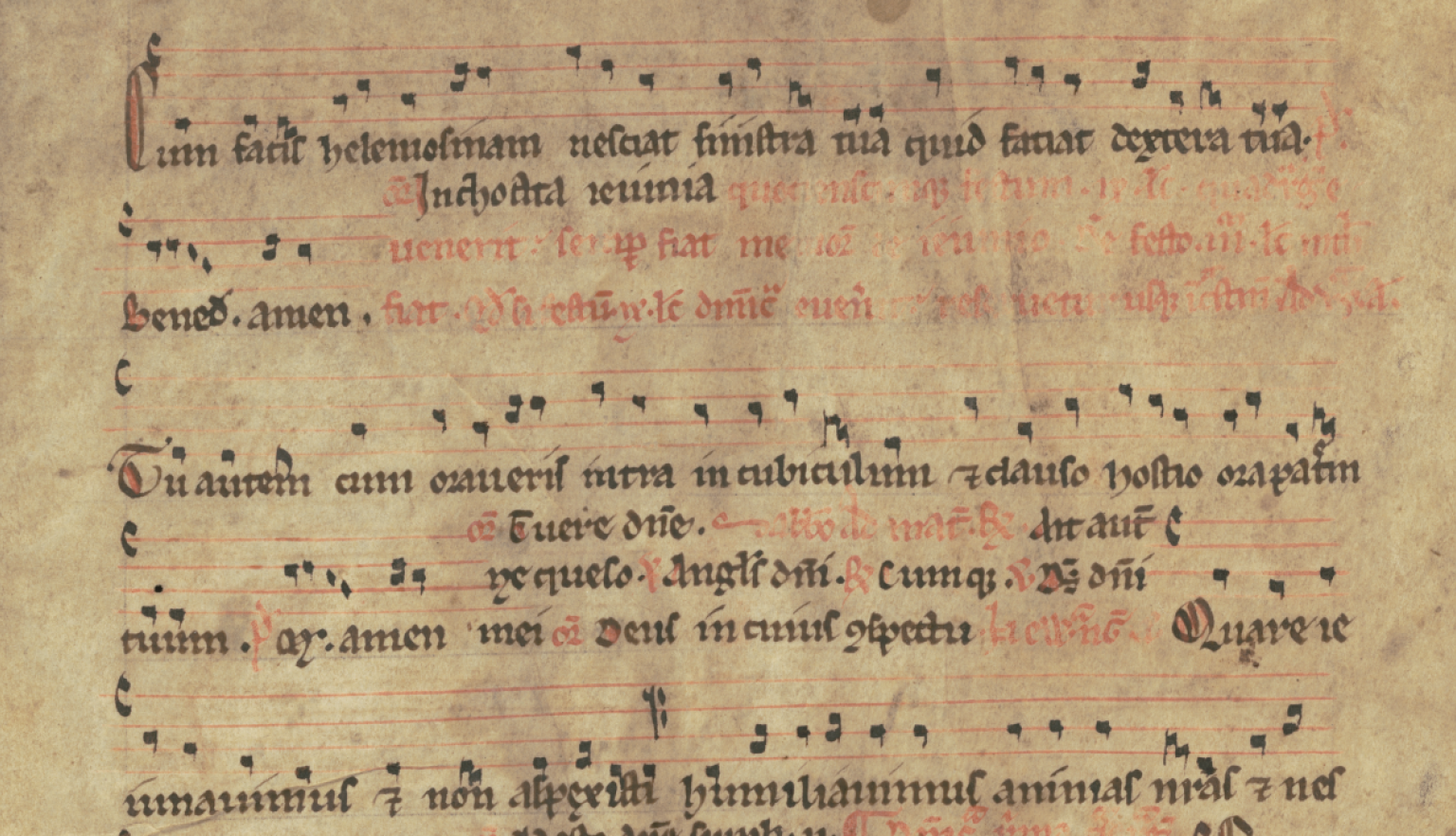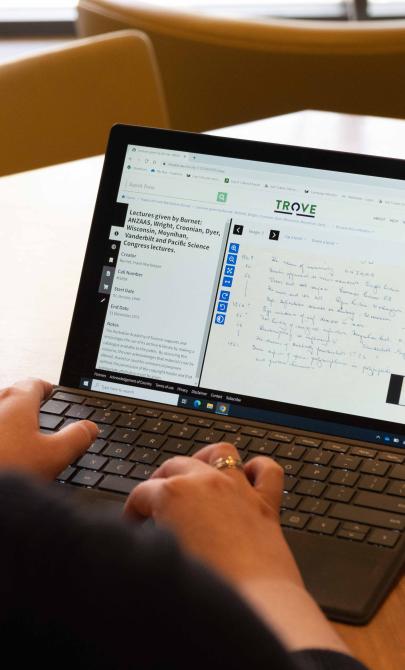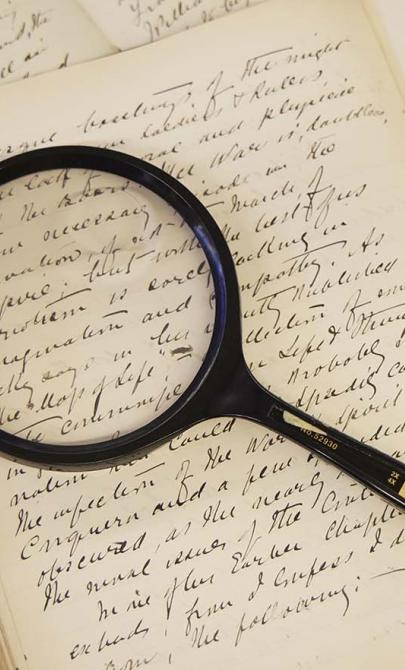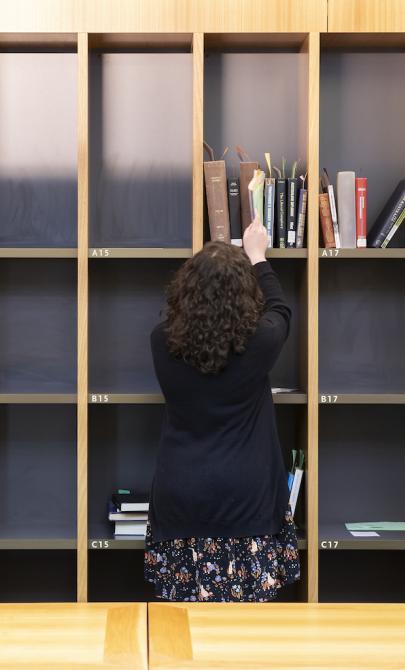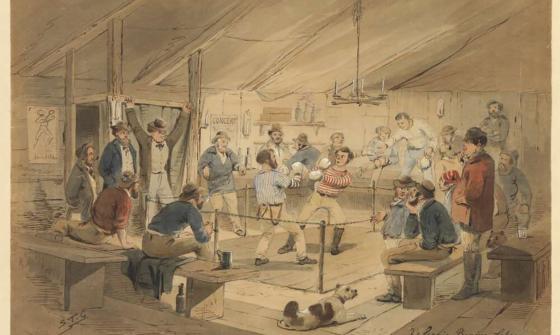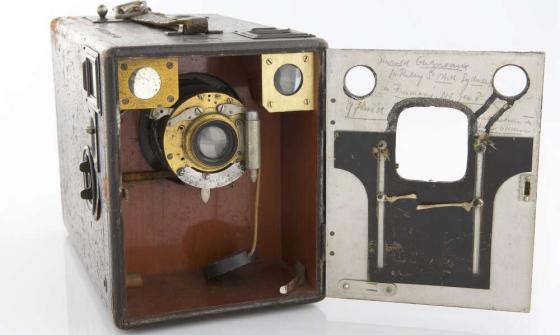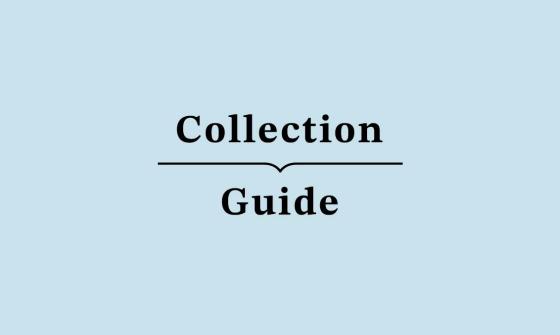Nan Kivell Collection
Collection highlights
Key items in the collection
Highlights from this collection demonstrate its historical significance and variety.
There are about 5000 books, pamphlets and periodicals in the Nan Kivell Collection. They were mostly published in the period 1770–1900, although there are a substantial number of historical works dating from the 20th century. The collection largely relates to Australia, New Zealand and the Pacific including Antarctica, but there are also works on English literature and other extraneous subjects. One of the earliest works is a first edition of Sir Walter Raleigh's The History of the World (2 vols, 1614).
The subject range of the collection is extremely broad and it includes many of the most celebrated works dealing with the discovery and colonisation of Australia and New Zealand.
Among the many areas of strength are:
- voyages
- maritime exploration
- James Cook
- travel
- settlement
- emigration
- convicts and transportation
- shipping and shipwrecks
- missions
- trade
- almanacs
- directories
- ethnography
- Australian Aborigines
- Maori language and culture
- Maori Wars
- bushrangers
- goldfields
- the Tichborne Case
- memoirs
- flora and fauna
- novels.
In addition to the works on Australia and New Zealand, there are books dealing with:
- early European contact with Fiji
- Hawaii
- the Marquesas
- Pitcairn Island
- Samoa
- Tahiti
- Tonga
- other island groups.
The collection contains odd issues and broken runs of many periodicals. Longer runs include the
- Illustrated Australian Magazine (1850–1851)
- Saturday Magazine (1832–1842)
- Sydney Magazine of Science and Art (1858–1859)
- Te Karere Maori (1856–1860)
- Transactions of the Linnaean Society (1791–1837).
In addition to the main collection, there is an art collection, totalling 1460 items. It comprises books on:
- art history
- artists
- the theory and principles of art
- issues of art magazines
- a large number of exhibition, gallery and auction catalogues.
They were almost entirely published in the twentieth century and mostly deal with European art, although there are some works on ancient art, Asian art and the art of Northern and Central America.
The Nan Kivell Collection contains 312 manuscript items or collections relating to Australia, New Zealand and the Pacific 1750–1900. They include:
- ships' logs
- diaries
- letters
- literary manuscripts
- family papers
- cutting books.
There are many manuscripts on maritime exploration. They include:
- a letter of James Cook (1772)
- a journal kept on the voyage of Yves de Kerguelen to the Indian Ocean (1773–1774)
a journal kept on HMS Providence in the Pacific (1791–1792) - letters of:
- Sir Joseph Banks
- Daniel Solander
- William Bligh
- Phillip Parker King
- journals of several French ships in the Pacific (1825–1847)
- the log of midshipman James Stanton on HMS Rattlesnake (1849–1851).
There are also important sources on missionary activities in the Pacific, including:
- records of the voyage of the Duff (1797)
- letters of London Missionary Society missionaries
- manuscripts and letters of Reverend Richard Taylor in New Zealand
- a notebook of Reverend John Thomas in Tonga.
The early history of the Australian colonies is documented in:
- the journal of Richard Atkins (1791–1810)
- letters and documents of Margaret Catchpole
- the extensive papers of Governor Sir Thomas Brisbane
- the diary of Henry Bunbury in Western Australia (1828–1837)
- letters of:
- Sir George Arthur
- Bishop William Broughton
- Charles Darwin
- Elizabeth Fry
- John Hunter
- Samuel Marsden
- Sir Thomas Mitchell
- William Wilberforce.
There are many diaries kept by British emigrants and travellers in Australia in the 19th century.
Among the early New Zealand records are:
- letters and deeds of Maori chiefs
- a daybook and manuscript of William Colenso (1836–1842)
- letters of:
- Charles Heaphy
- Bishop GA Selwyn
- Sir Donald McLean
- the diaries of William Searancke (1856–1861)
- the reminiscences of:
- Sarah Selwyn
- William Strutt.
In addition, there is:
- a calligraphy collection comprising English legal documents (1325–1819)
- musico-liturgical documents
- fragments of literary and theological works in book hand.
The legal documents mostly relate to individuals and properties in Dorset and Wiltshire and include:
- letters
- bonds
- leases
- injunctions
- quit claims.
The musical manuscripts consist of:
- psalms
- antiphons
- responsories
- other fragments from breviaries and missals.
One leaf dates from the first half of the 11th century and is the oldest original item in the Library’s collections.
The Nan Kivell Collection contains 861 maps and charts. They range from:
- world maps of the 16th and 17th centuries to coastal charts
- cadastral maps
- city plans
- building plans
- railway maps
- electoral maps
- celestial maps
published in Australia and elsewhere in the 19th century.
The oldest map in the collection is a version of the famous world map of Ptolemy taken from the Nuremberg Chronicle 1493).
There are 60 maps published in the 16th and 17th centuries, mostly comprising world maps or maps of Asia. There is a strong representation of works of Dutch and Flemish cartographers, such as:
- Willem Blaeu
- Justus Danckerts
- Nicolaes van Geelkercken
- Hendrik Hondius
- Gerhard Mercator
- Abraham Ortelius.
There are also maps of Vincenzo Coronelli and John Speed and a copy of Melchisedech Thevenot’s Hollandia Nova detecta (1663), which depicted the Australian continent as it was to be known for the next century. Of the 250 18th-century maps, the majority are based on the explorations of:
- William Dampier
- George Anson
- James Cook
- Louis de Bougainville
and the later Australian surveys of John Hunter and William Dawes.
There are also world maps and maps of the East Indies and other regions by English, French and Dutch mapmakers such as:
- Jacques Bellin
- Johannes van Keulen
- Thomas Kitchin
- Herman Moll.
Australian maps make up the bulk of the 19th-century maps, although there are a number of maps of:
- New Zealand
- South East Asia
- North and South America.
They includes plates from:
- the journals of explorers such as Matthew Flinders, John Oxley and Thomas Mitchell
- maps produced by English cartographers such as Aaron and John Arrowsmith, John Bartholomew and James Wyld
- charts issued by the Hydrographic Office in Britain and the Depôt des Cartes et Plans de la Marine in France
- maps published by the Society for the Diffusion of Useful Knowledge.
There is also a long series of maps issued by the Victorian Surveyor-General’s Department in the 1850s.
The paintings, drawings and prints collected by Nan Kivell form the centrepiece of his collection and occupy a unique place within the Library's Pictures Collection. As a collection of historical art documenting the British and French exploration of the Pacific and the British colonisation of Australia and New Zealand, it is almost without parallel. Perhaps only the collection of Sir William Dixson in the State Library of New South Wales is comparable in size and richness.
The collection comprises 3,404 paintings and drawings and 8,162 prints. There are 233 oil paintings, representing about one-third of the oil paintings in the Library's collection.
As with the books and manuscripts, the collection contains many works relating to maritime exploration. They include:
- the portrait by Jacob Cuyp of Abel Tasman and his family (circa 1640)
- a sketch by Joshua Reynolds of the Tahitian chief Omai
- a huge painting by George Carter on the death of Captain Cook (1781)
- numerous paintings by the artists who sailed with Cook:
- William Ellis
- William Hodges
- John Webber.
Other naval artists represented in the collection are:
- FW Beechey of HMS Blossom (1825–1828)
- TH Huxley of HMS Rattlesnake (1846–1850)
- James Glen Wilson of HMS Herald (1850).
The Australian paintings include works by most of the leading artists of the colonial period:
- George French Angas
- Thomas Baines
- TR Browne
- Nicholas Chevalier
- Augustus Earle
- ST Gill
- John Glover
- William Govett
- George Lacy
- John Lewin
- Joseph Lycett
- Conrad Martens
- George Peacock
- John Skinner Prout
- Richard Read
- William Strutt
- Eugene von Guerard.
They depict:
- cities and country towns
- rural views
- pastoral homesteads
- gold diggings
- exploring parties
- encounters with First Australians
- many other subjects.
The geographical coverage is broad, including:
- Charles Harris Allen (Queensland)
- George French Angas (South Australia)
- Duncan Cooper (Victoria)
- William Henty and Johannah Crear (Tasmania).
Notable British artists are represented, with portraits of:
- George Barrington by Sir William Beechey
- Lord Hobart by Sir Thomas Lawrence
- John Hunter by William Bennett.
One of the most celebrated items in the collection is the sketchbook of Captain John Hunter containing his drawings of the birds and flowers of Port Jackson from 1788 to 1990.
Artists such as:
- Angas
- Chevalier
- Earle
- Strutt
also worked in New Zealand and some of their New Zealand paintings are represented in the collection.
Altogether there is a very large number of paintings and drawings of
- Maori chiefs
- Maori ceremonies and villages
- military encounters
- British officials and soldiers
- New Zealand cities and towns
- the pink and white terraces at Rotorua
- lakes and mountains
- other scenic views.
Notable New Zealand artists whose works were collected by Nan Kivell include:
- CD Barraud
- Sir William Fox
- John Gully
- Charles Heaphy
- John Hoyte
- Gottfried Lindauer
- Albin Martin
- Joseph Merrett
- Sir Henry Warre
- Edward Williams.
Of particular interest is a scrapbook of sketches, watercolours and photographs of Maori art compiled between 1864 and 1865 by Horatio Robley.
While the majority of wood engravings, lithographs, aquatints, mezzotints and other prints in the collection relate to Australia and New Zealand, a significant number depict the islands and peoples of the Pacific. Many are taken from the work of the first English and French artists to visit the Pacific, such as:
- depictions of Tahiti by Sydney Parkinson
- Tonga by John Webber
- Hawaii by Jacques Arago
- the Solomon Islands by Louis de Sainson
- the Mariana Islands by Louis Choris.
Nan Kivell was an omnivorous collector and did not restrict his collecting to books and other library materials.
There is a wide range of objects and artefacts in his collection. They cannot be summarised easily, but include:
- nautical instruments from Cook's voyages
- tapa cloth
- a silver kettle and spirit lamp given to Joseph Banks by Queen Charlotte
- a scrimshaw
- carved emu eggs
- busts of governors and politicians
- 21 medals commemorating the work of:
- George Anson
- Joseph Banks
- Charles Darwin
- Emperor Napoleon
- others.
The personal papers of Nan Kivell date from about 1922 until his death, but there is relatively little material on his first 30 years as a collector.
They consist of correspondence with:
- dealers
- collectors and libraries
- notebooks
- newspaper cuttings
- catalogues of the collection
- drafts of Portraits of the Famous and Infamous.
In addition, there are 2 large scrapbooks containing:
- photographs
- prints
- extracts from exhibition catalogues
- newspaper cuttings
- cards
- invitations.
About Rex Nan Kivell
Early life and wartime service
Sir Rex de Charembac Nan Kivell (1898-1977) was born at Christchurch, New Zealand, and educated at New Brighton Public School and Christchurch Technical College. He worked as a bookbinder before enlisting in the New Zealand Expeditionary Force in 1916. He was discharged in England in 1919, never having seen action, and was employed as a judge’s marshal for some years. He became interested in archaeology and took part in the La Tène excavations in Wiltshire.
Career in the art world
In the early 1920s Nan Kivell began to visit galleries and art auctions. He became a connoisseur of modern European art. In 1925 he joined the staff of the Redfern Gallery in London, which had been founded in 1923 as a small artists' cooperative. In 1931 he became managing director and he remained a director until his death. The Redfern Gallery specialised in modern art and exhibited the work of such artists as:
- Marc Chagall
- Pablo Picasso
- Chaim Soutine
- Jankel Adler
- Francis Bacon
- Henry Moore
- Ben Nicholson
- Barbara Hepworth
- Stanley Spencer
- Paul Nash
- Victor Pasmore
- Graham Sutherland
- Sidney Nolan.
The Gallery prospered and Nan Kivell became an extremely wealthy man. By the 1950s, he had a flat in London, a country house in Wiltshire and a villa in Morocco.
Passion for collecting
Nan Kivell claimed his interest in collecting had been stimulated in his boyhood by an antiquarian bookseller in Christchurch. He became particularly interested in European voyages to the Pacific. In London in the 1920s he began to collect:
- books
- manuscripts
- maps
- paintings
- prints
and other items relating to the exploration of the Pacific and the early British settlement of Australia and New Zealand.
In 1926 he purchased from a dealer 161 watercolours of Augustus Earle and many of the most famous artworks in his collection were acquired in the next 20 years.
Legacy and recognition
A major part of his collection was placed in the Library between 1949 and 1952, but he continued to be an indefatigable collector all his life. For instance, he acquired:
- the Hunter Sketchbook in 1953
- the Webber portrait of Captain Gore in 1955
- the papers of Governor Brisbane in 1958.
His extraordinary achievements as a collector were recognised when he was knighted in 1976.
Nan Kivell wrote Portraits of the Famous and Infamous: Australia, New Zealand and the Pacific, 1492–1970 1974.
Background to the collection
In 1946 Nan Kivell first discussed the possibility of placing his collection in the Library for safekeeping.
It was received between 1949 and 1952, but it was not purchased by the Library until 1959.
In the meantime, Nan Kivell had gone on collecting and from 1959 until 1976, when he transferred numerous consignments to the Library.
Following his death in 1977, a small number of books, a large tapa cloth and his medals were received under the terms of his will. The later instalments were all gifts.
Nan Kivell is unquestionably one of the greatest benefactors in the history of the Library.
Nan Kivell numbered every item, or group of items, in his collection, regardless of format. Although the collection is housed in several locations within the Library, his numbering system has largely been retained.
The books and pamphlets are kept together within the Australian Collection and are shelved in accordance with the Nan Kivell numbers. They have been catalogued individually, and the call numbers have the prefix 'NK'. The art collection forms a separate sequence, and the call numbers have the prefix 'NKA'.
The maps are kept together within the Maps Collection and are also filed by Nan Kivell numbers. They have been catalogued individually, and the call numbers have the prefix 'MAP NK'.
The paintings, drawings, prints and objects are housed in the Pictures Collection. All the original works and most of the prints have been catalogued and a considerable number have been digitised. The call numbers have the prefixes 'PIC T' for original works and 'PIC U' for prints, followed by the accession number and Nan Kivell number. The call numbers for the objects have the prefix 'PIC OBJ'.
The manuscripts are held in the Manuscripts Collection at 'MS 4001' to 'MS 4299'. They have been catalogued individually, and the entries give the Nan Kivell numbers as well as the collection numbers.
The calligraphy collection is held at 'MS 4052'. A detailed guide to the calligraphy collection, compiled by Barbara Ross in 1985, is available in the Special Collections Reading Room.
The personal papers of Nan Kivell are also held in the Manuscripts Collection at 'MS 4000'. They occupy 18 boxes. Use the finding aid.
Collections of 20th century British art assembled by Nan Kivell are held in the Museum of New Zealand Te Papa Tongarewa in Wellington and a number of other New Zealand institutions.
The National Gallery of Australia holds 32 paintings from the Nan Kivell Collection on permanent loan. Refer to National Library of New Zealand's Nan Kivell collection.
This guide was prepared using these references:
- Pauline Fanning, The Australasian Collection of Mr Rex Nan Kivell in the National Library of Australia, Canberra, Australian Library Journal, vol 11 (3), July 1962, pages 139–42.
- Marian Minson, Encounter with Eden: New Zealand 1770–1870: Paintings and Drawings from the Rex Nan Kivell Collection National Library of Australia, National Library of New Zealand, Wellington, 1990.
- Nicholas Thomas, Exploring the Pacific with Rex Nan Kivell, in Peter Cochrane (editor), Remarkable Occurrences: The National Library of Australia’s First 100 Years 1901–2001, National Library of Australia, Canberra, 2001, pages 145–61.
- John R Thompson, Nan Kivell, Sir Rex de Charembac (1898–1977), Australian Dictionary of Biography online.
- Paradise Possessed: The Rex Nan Kivell Collection, National Library of Australia, Canberra, 1998.
